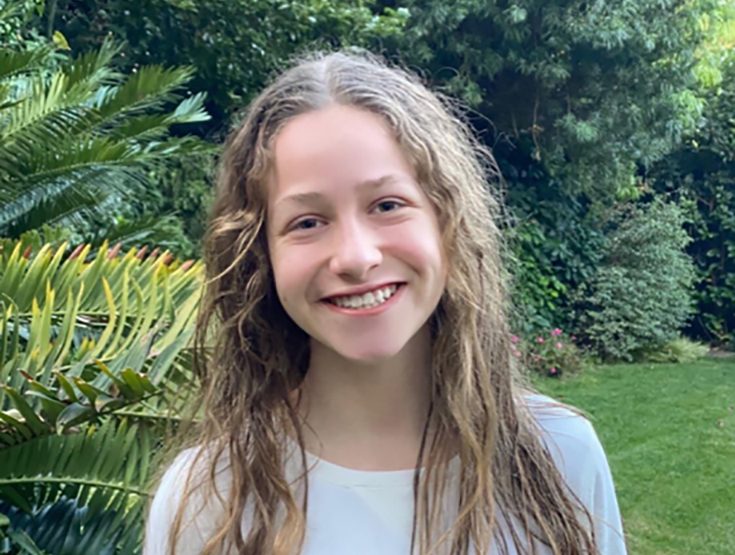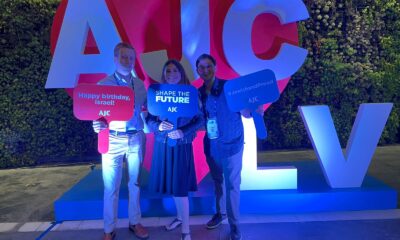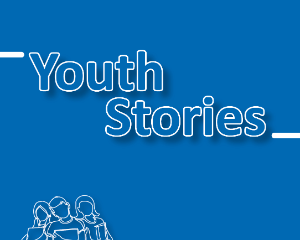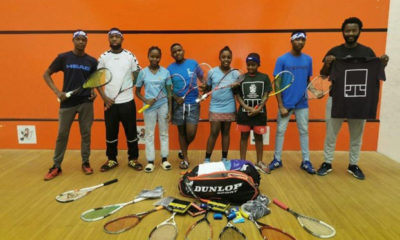
Lifestyle/Community

SA teen curates LA Holocaust exhibition
Youngsters who have seen David Labkovski’s paintings of the Holocaust say the artworks are much more raw and emotional than the black and white images we have come to know so well.
“It really hits home. You get the feeling of what these people went through,” says a student commenting on the artist’s work.
Now, Labkovski’s works have been combined with the stories of famed Yiddish writer Sholem Aleichem in a new online exhibition titled “Recalling a Lost World – David Labkovski brings Sholem Aleichem stories to life”, hosted by the Holocaust Museum Los Angeles. One of the curators of the exhibition, which opened on 28 October, is 14-year-old Eva Trope in Grade 9 at Yeshiva College in Johannesburg.
In the exhibition of about 30 artworks, Labkovski’s depiction of the world of Eastern European Jews prior to, during, and after the Holocaust, is combined with the writing of Aleichem, who Labkovski thought of as his muse. Though Aleichem’s characters were created decades earlier, they are so true to life, he could have been describing the people of Vilnius – or Vilna as it was then known – in Lithuania, Labkovski’s childhood home.
For Labkovski, reading Aleichem’s stories brought him back to his childhood. He wanted to commemorate the Jewish world that was, not just how the Jewish people died, but how they lived for centuries before the Holocaust.
The exhibition has a dark side, moving from paintings with bright colours and Aleichem’s fairytale-like settings to increasing scenes of destitution. Some place their subjects in the Vilna ghetto with Jewish stars on their clothing, and the exhibition culminates with an image of the destroyed Great Synagogue of Vilna after the war.
The exhibit includes audio tours which share Labkovski’s illustrations of Aleichem’s stories with the audience along with teacher educational lesson plans combining the art and literature.
The combination is a powerful way to educate viewers, particularly youngsters. “I could stare at the works for hours,” Trope says of the exhibition. “The placing of the people, buildings, the colour of the sky … many of the Holocaust stories I found unrelatable before have come to life.”
Trope, who “loves art in all its forms”, got involved in the exhibition through a poetry competition organised by the David Labkovski Project (DLP) earlier this year. The DLP uses Labkovski’s art to improve youngsters’ understanding of the Holocaust and promote tolerance and acceptance.
The competition brought her in touch with Stephanie Wolfson, director of education at the DLP, and Trope joined the DLP’s six-months-long International Student Docent Programme with students (Grades 8 to 12 ) from around the world who learn how to educate others about Labkovski’s art. From this, she was asked to join the team curating the current exhibition.
Curating is a “big job”, she says. She worked on the layout, narratives, translations of interviews and story summaries, among other things. Trope was even required to attend meetings at 01:00 at times because her co-workers in the United States were nine hours behind her. “It was a bit stressful with school work and exams,” she admits, but it was worth it.
At 14, she was the youngest member of the team by far, “but we had sophisticated discussions, and listened to each other”, Trope says.
Michele Gold, the president of the Holocaust Museum Los Angeles, describes Trope’s involvement as “remarkable”.
“Eva is wise and professional beyond her years,” says Leora Raikin, the founder and executive director of the DLP. “She has shown dedication not only towards the creation of the virtual exhibit, but the translation of movie footage. She was also part of the official speaking panel for the launch of the international exhibit along with the Israel consul general to Los Angeles, Dr Hillel Newman.”
What’s next for this budding art historian? She aims to get involved in other exhibitions, and to help expand this project by, among other things, assisting in bringing the exhibition to South Africa.










